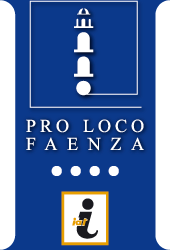- Visit Faenza
Places to see
- Accommodations
- Food and drink
- Events
- Guided tours
- News
- Ceramics
- Pro Loco Faenza
Useful infos
- City map
- City history
- Churches, monuments
- Museums
- Parks and gardens
- Essential informations for major monuments
- Routes
- Book a guided tour of the city
- Romagna Visit Card
- Palio of Niballo and Rioni
- Cultural activities
- Leisure
- Historical shops
- Twin towns
- Getting here
- How to move in the city
- Useful phone numbers
- Other useful informations
- Links

Faenza’s Municipal Art Gallery is the town’s most ancient museum. It houses a rich collection of works, especially paintings, divided into two sections; the Antique Hall, which represents a wide collection of local art from Roman times to the end of the XVIII century, and the Modern Art Hall with works from the nineteenth and twentieth centuries, grouping together stylistic schools and trends.
Description: The founding of the Faenza Art-Gallery goes back to 1979, a year in which the local town council acquired a large collection of prints, plaster casts and paintings by the artist Giuseppe Zauli. A number of paintings confiscated from the churches and religious groups in the Napoleonic period and the era following the unification of Italy, were later added to the original collections. After 1875, the art gallery was set-up in the rooms of the ex-Jesuit convent (where it is still located) by Federico Argnani, a unique patriotic and artistic character. Thanks to his work, the original collection grew with various kinds of works, all of which were carefully recorded in the inventory documents dating 1889.
The Art Gallery collections are divided into two sections: the Ancient Section and the Modern Art Gallery. The Ancient Section has a wide range of art and history from Roman times to the 18th century: mosaics, stones, sculptures and roman and high medieval epigraphs. The more consistent and qualified part of the collections is made up of paintings and sculptures that run through five centuries of Faentine and Italian art. Of great importance are the artists who diffused the Renaissance in Faenza: Biagio d'Antonio, G. B. Bertucci il Vecchio, Marco Palmezzano, Donatello, A. Rossellino and the Maestro della Pala Bertoni. The collection of 1500’s and 1600’s altarpieces that “migrated” from the churches of Faenza is imposing. The most important themes are: still nature works by Recco, Ruoppolo, Boselli, Resani, Magini and Levoli, which enter into the 18th century. From this period are the landscapes, the battles and the often anonymous paintings by important artists: A. Locatelli, S. Orlandi, G. Bucci and F. Guardi. Thanks to purchases and most of all to increasing number of donations the paintings and sculptures of the 1800’s and 1900’s have increased in number, to the point of creating problems in finding suitable exhibition space. The paintings are grouped into the schools and historical-stylistic tendencies: Neoclassicism and Purism (F. Giani, M. Sangiorgi, T. Minardi, P. Piani, G. Landi); Romanticism and Realism (R. Liverani, M. D'Azeglio, V. Hugo, G. Fattori, A. Berti T. Dalpozzo and others of local interest). Recently several paintings from the 1800’s French school were purchased, with two sculptures by A. Rodin.
- Address
Via S.Maria dell'Angelo 9
48018 Faenza RA - Phone: 0546 680251 - 334.3423389
- Email: infopinacoteca@romagnafaentina.it
- Web: https://www.pinacotecafaenza.it
- Area: Center
- Opening:
opening hours: from Tuesday to Thursday 3.30 - 6.30 p.m.; from Friday to Sunday 10.30 a.m to 6.30 p.m.; Monday closed
- Prices:
Admission: € 5 - reduced ticket € 3
Free admission up to 14 years
- Map:
- Download:
Pinacoteca Brochure
Graphics - HTML: Caterweb
Developed by: CicoNET
CMS: Web Portal Now
All CREDITS








